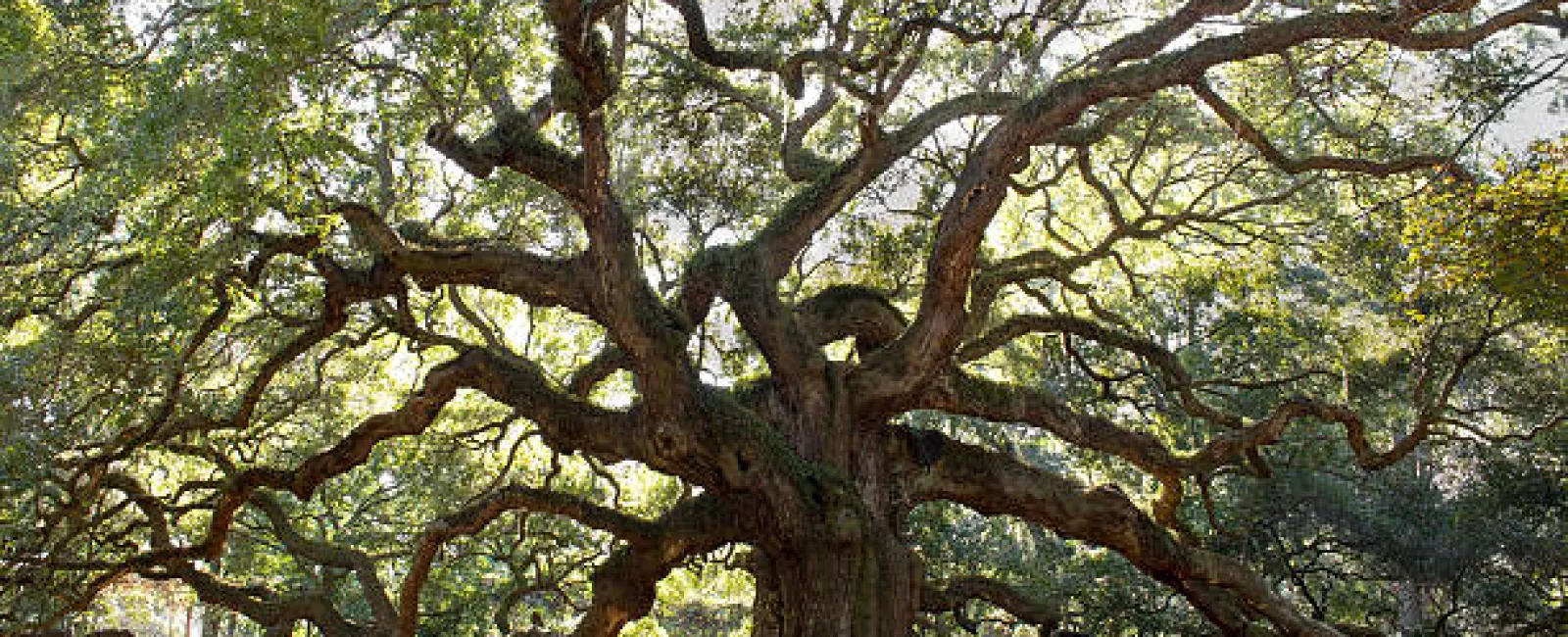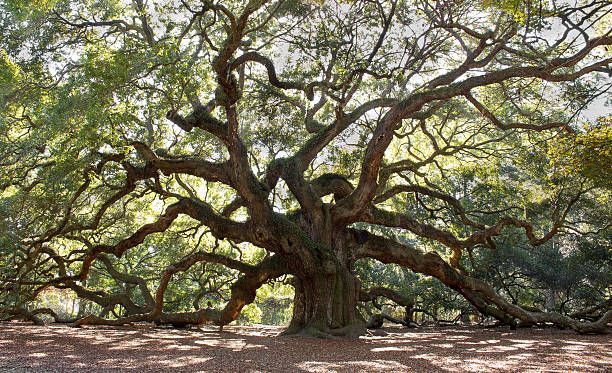
The Southern Live Oak, scientifically named Quercus virginiana, holds a proud place as Georgia’s official state tree. With its spreading canopy draped in Spanish moss, this iconic oak is a signature part of the landscape and identity of the American South.
Overview of the Southern Live Oak
The Southern Live Oak is an evergreen oak tree that can grow up to 80 feet tall and 100 feet wide. Its broad canopy is formed by dense, strong branches adorned with dark green elliptical leaves. This majestic oak tree can live for up to 400 years. The Southern Live Oak thrives in the coastal regions of the southeastern United States, from Virginia to Florida and west to Texas. It occurs in maritime forests, hammocks, sandhill scrub, and grasslands. This tree plays an important ecological role by providing shade, holding soil, and supporting a rich diversity of plant and animal life within its sheltering crown.

Historical and Cultural Significance
Native Americans and early European settlers made good use of the durable Live Oak wood for building ships and houses. The tree’s beauty and southern charm also made it a symbol of heritage and hospitality in Georgian and Southern culture. It became iconic in literature and paintings set in the antebellum South. Famous Live Oak specimens appear in Georgian landscapes like Savannah’s Forsyth Park, glynn County’s Treaty Oak, and Athens’ Tree That Owns Itself.
The Southern Live Oak as Georgia’s State Tree
In 1937, Governor E.D. Rivers officially designated the Southern Live Oak as the state tree of Georgia, who proclaimed its resilience matched Georgians’ tenacity. Its longevity and strong roots represent the spirit of Georgia as the Empire State of the South. The sweeping, mossy branches of the Southern Live Oak also create signature Georgian scenery, gracing gardens and public squares with classic southern beauty.
Unique Characteristics of the Southern Live Oak
The Southern Live Oak developed superb adaptations that allow it to thrive through the hot, humid summers and occasional cold snaps of the southeast. It controls water loss with thick bark and leaves with wax coatings. It also has a tremendous root system which taps into groundwater, stores energy, and supports the heavy limbs. These hardy trees can weather intense storms and resist decay while growing for centuries. The Southern Live Oak also supports a wealth of biodiversity, hosting pollinators and acorns that feed birds and mammals.
Conservation and Current Status
Conservationists work to protect fine specimens of ancient Southern Live Oaks through heritage tree programs and thoughtful urban landscape design. However climate change, invasive pests, overdevelopment, soil disturbance pose growing threats to these trees.
Public education and proper care techniques focused on the needs of Live Oaks can uphold healthy populations of Georgia’s beloved state tree to be treasured for generations to come.
Conclusion
With its graceful beauty, ecological virtues, cultural symbolism and hardy resilience, the Southern Live Oak is a most fitting emblem for the state of Georgia. This long-lived oak remains intertwined with Georgian landscapes and regional identity. Careful stewardship promises that noble Southern Live Oaks will continue standing tall and spreading their mossy branches over future generations.
